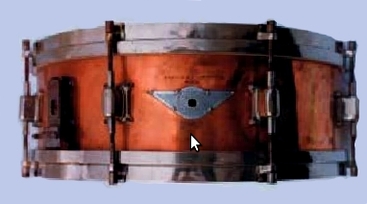Whenever we have a project here at MBI we always undertake a little research, if for no other reason we might learn something interesting, more often than not though you'll learn something useful that will stand you in good stead when working on the thing in question.
The Hawkes snare I've been working on for a while has been quite easy to learn a little about, although from what I've found it seems to be reasonably rare, I haven't found another exactly the same and only a handful similar.
It was obvious from the badge that the drum is an "Ajax" model, a range I've learnt was launched in 1927. It also appears the company merged in 1930 to become Boosey And Hawkes. I'm unsure wether drums were branded still solely as Hawkes after this period (as mine is) but I would assume probably not. This leads me to believe that the date, hand written on the label inside, along with the serial number, are legitimate. The date reads 31/12/1928. The serial number also stamped on the shell is 8666
The exact model looks to be an Ajax Senior no. 2
reference - http://ukdrums.weebly.com/hawkes--son-1900-30.html
Hawkes and Son were founded by Wiliam Henry Hawkes in 1865 and were rivals of Boosey & Co who they later merged with in instrument manufacture, instrument fittings manufacture, reed production and music publishing.
It seems then that this must be one of the earliest Ajax drums, a name which Boosey and Hawkes stuck with right the way through to the 70's.
I'd love to know more information if anyone has any info do get in touch!
The drum is slowly being restored to playable condition, I might add not to original factory condition, to a playable and aesthetically pleasing condition. Reverting the drum to pristine factory condition would loose a considerable amount of history, and the changes I make to suit my wants will add to its history. It is a strong view of mine that "as original" restorations often only serve to make something less interesting, only serving to destroy years of accumulated history!
reference - http://ukdrums.weebly.com/boosey--hawkes-history.html
The Carpenter




































